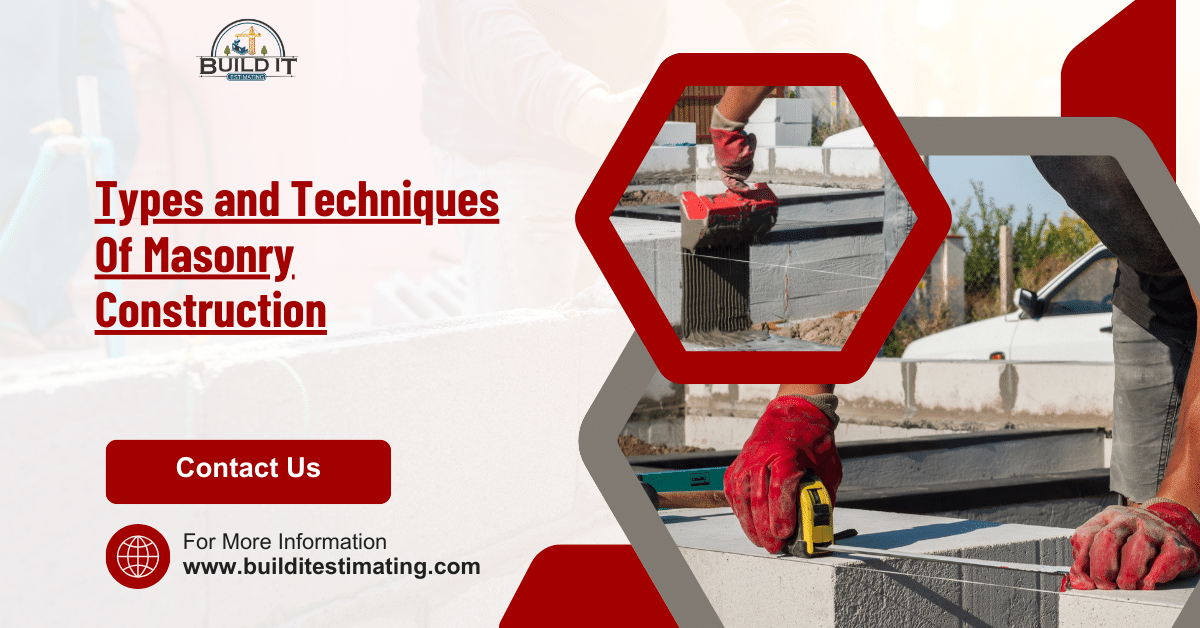Masonry construction is a traditional building technique that has been used for centuries to create durable and aesthetically pleasing structures. It involves the use of materials such as bricks, stones, and concrete blocks, which are bonded together with mortar to form walls and other structural elements. This guide delves into the various types and techniques of masonry construction, highlighting their applications, benefits, and methods.
Importance of Masonry in Building
Masonry is crucial in building due to its strength, durability, and resistance to weathering. It provides structural integrity and thermal mass, which helps in regulating building temperatures. The versatility of masonry allows for a wide range of architectural designs, from classic to contemporary.
Historical Significance of Masonry
The use of masonry dates back to ancient civilizations, where it played a significant role in the construction of monumental structures like the Egyptian pyramids and Roman aqueducts. These historical examples demonstrate the longevity and resilience of masonry, making it a trusted construction method through the ages.
Types of Masonry Construction
Brick Masonry
Brick masonry involves the use of bricks, which are rectangular units made of clay or shale. Bricks are laid in a specific pattern and bonded with mortar. This type of masonry is commonly used for building walls, partitions, and pavements.
Stone Masonry
Stone masonry uses natural stones, which can be cut into specific shapes or used in their natural form. This type of masonry is known for its aesthetic appeal and durability. It is often used in the construction of foundations, walls, and decorative elements.
Concrete Block Masonry
Concrete block masonry utilizes blocks made of concrete, which are larger than bricks and come in various sizes and shapes. This type of masonry is popular for its strength, cost-effectiveness, and ease of installation.
Veneer Masonry
Veneer masonry involves the application of a thin layer of masonry material, such as brick or stone, over a structural backing. This technique provides the aesthetic benefits of masonry without the structural weight.
Brick Masonry Techniques
Types of Bricks
There are various types of bricks used in masonry, including clay bricks, concrete bricks, and fly ash bricks. Each type has distinct properties and applications. Clay bricks are known for their strength and thermal properties, while concrete bricks offer versatility and cost savings.
Bonding Patterns
Bonding patterns refer to the arrangement of bricks in masonry construction. Common patterns include running bond, Flemish bond, and English bond. These patterns not only enhance the structural integrity of the wall but also add to its visual appeal.
Reinforced Brick Masonry
Reinforced brick masonry incorporates steel reinforcement bars within the brickwork to enhance its strength and load-bearing capacity. This technique is particularly useful in seismic zones and for constructing tall structures.
Stone Masonry Techniques
Types of Stone
Different types of stones are used in masonry, including granite, limestone, sandstone, and marble. Each stone type has unique characteristics, such as hardness, color, and texture, which influence its suitability for various applications.
Ashlar Masonry
Ashlar masonry involves the use of finely dressed stones laid in regular courses. This technique is known for its precision and aesthetic quality, making it ideal for high-end architectural projects.
Rubble Masonry
Rubble masonry uses irregularly shaped stones that are not finely dressed. This technique is cost-effective and suitable for constructing foundations, retaining walls, and rural buildings.
Concrete Block Masonry Techniques
Types of Concrete Blocks
Concrete blocks come in various types, including solid blocks, hollow blocks, and cellular blocks. Each type has specific uses, with solid blocks providing high strength and hollow blocks offering better insulation and reduced weight.
Hollow vs. Solid Blocks
Hollow blocks have voids that reduce weight and improve thermal insulation, making them suitable for non-load-bearing walls. Solid blocks, on the other hand, offer greater strength and are used for load-bearing walls.
Reinforced Concrete Block Masonry
Reinforced concrete block masonry incorporates steel reinforcement within the blocks to enhance structural stability. This technique is commonly used in the construction of high-rise buildings and structures in seismic zones.
Veneer Masonry Techniques
Types of Veneer Materials
Veneer materials include thin slices of brick, stone, or manufactured products designed to mimic the appearance of natural materials. These veneers are applied to a structural backing to create a visually appealing surface.
Installation Methods
Veneer masonry can be installed using various methods, including adhered veneer and anchored veneer. Adhered veneer uses mortar or adhesives to attach the veneer to the backing, while anchored veneer uses mechanical fasteners.
Advantages of Veneer Masonry
Veneer masonry offers several advantages, including reduced weight, lower cost, and ease of installation. It provides the aesthetic benefits of traditional masonry without the associated structural challenges.
Advantages and Disadvantages of Masonry Construction
Durability and Strength
Masonry construction is renowned for its durability and strength, making it suitable for both residential and commercial buildings. It withstands fire, weather, and physical wear, ensuring long-lasting structures.
Aesthetic Appeal
Masonry offers a timeless aesthetic appeal, with various materials and techniques allowing for diverse design possibilities. It can be used to create intricate patterns, textures, and finishes that enhance the visual appeal of buildings.
Cost Considerations
While masonry construction can be more expensive upfront due to material and labor costs, it offers long-term savings through its durability and low maintenance requirements. However, cost can be a limiting factor for some projects.
Tools and Materials for Masonry Construction
Essential Masonry Tools
Key tools for masonry construction include trowels, levels, chisels, hammers, and jointers. These tools are essential for cutting, shaping, and laying masonry materials accurately.
Common Masonry Materials
Common materials used in masonry include bricks, stones, concrete blocks, mortar, and reinforcement bars. Each material plays a specific role in ensuring the strength and stability of the structure.
Sustainable Practices in Masonry Construction
Use of Recycled Materials
Incorporating recycled materials in masonry construction, such as reclaimed bricks and concrete, helps reduce environmental impact and promotes sustainability.
Energy Efficiency in Masonry
Masonry materials have high thermal mass, which helps in regulating indoor temperatures and improving energy efficiency. Properly designed masonry buildings can reduce heating and cooling costs.
Environmental Impact of Masonry
Masonry construction has a relatively low environmental impact compared to other building methods. However, sourcing sustainable materials and minimizing waste are important considerations.
Future Trends in Masonry Construction
Innovations in Masonry Materials
Advancements in masonry materials, such as self-healing concrete and lightweight composites, are enhancing the performance and sustainability of masonry construction.
Advanced Masonry Techniques
New techniques, including 3D printing and prefabrication, are revolutionizing masonry construction by improving precision, reducing labor costs, and accelerating project timelines.
Case Studies and Real-World Examples
Notable Masonry Structures
Examining notable masonry structures, such as the Great Wall of China and the Colosseum, provides insights into the durability and versatility of masonry construction.
Lessons from Masonry Projects
Learning from both successful and challenging masonry projects helps identify best practices and common pitfalls, contributing to improved techniques and outcomes.
Conclusion
Masonry construction remains a fundamental building technique, offering unmatched durability, aesthetic appeal, and versatility. Understanding the different types and techniques of masonry construction allows builders and architects to choose the best methods for their projects, ensuring structural integrity and visual excellence. By incorporating sustainable practices and staying abreast of industry innovations, masonry construction continues to evolve, meeting the demands of modern architecture and environmental responsibility.

